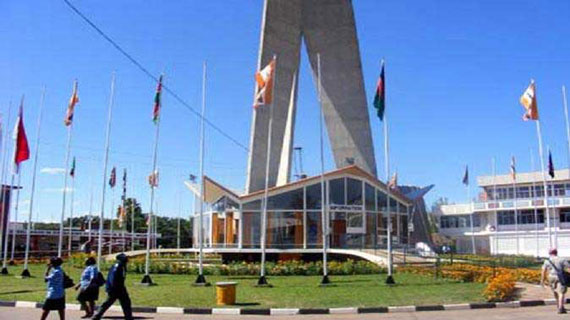58 percent increase in maize yields expected…Modernising climate-proofed farming programme underway
CABINET has said the country is expecting a bumper harvest in the 2022/23 farming
season and Government is already working on modalities to modernise climate-proofed
farming Pfumvudza/Intwasa Programme.
Lands, Agriculture, Fisheries, Water and Rural Development Minister Dr Anxious Masuka
yesterday presented before Cabinet the findings of the second round crop, livestock and
fisheries assessment report showing that the country had a successful cropping season.
Pfumvudza/Intwasa
Briefing the press during a post-Cabinet meeting, Information, Publicity and
Broadcasting Services Minister Monica Mutsvangwa said the country is expected to
record a 58 percent increase in maize production compared to the last summer cropping season.
Minister Mutsvangwa said the country is expecting an increase in crop production across
all the cereals that were planted during the 2022/23 farming season.
“Cabinet wishes to inform the nation that despite the uneven start and distribution of
rains during the 2022/2023 Summer Season, the prospects for high yields now look
bright, following the Crop, Livestock and Fisheries Assessment which has been
completed,” said Minister Mutsvangwa.
“The estimated maize production is 2 298 281 tonnes, a 58 percent increase on the
2021/2022 season; traditional grains production is estimated at 280 966 tonnes a 45
percent increase on the 2021/2022 figure; sorghum production is expected to be 191 125
tonnes which is 32 percent more than production in the 2021/2022 season; pearl millet
production is expected to be 171 221 tonnes which is 61 percent more than what was
produced in 2021/2022 season and finger millet production is expected to be 18 610
tonnes, which is 250 percent more than what was produced in the 2021/2022 season.”
She said the total cereal production is 2 579 247 tonnes against a national cereal
requirement of 1 837 742 tonnes for human consumption and 450 000 tonnes for
livestock, leaving a surplus.
Minister Mutsvangwa said cotton production for the 2022/2023 season is estimated to be
at 152 472 tonnes, a three percent increase from the previous season while tobacco
production is estimated by nine percent to 234 745 tonnes.
“Soya bean production is estimated at 93 089 MT, a 13 percent increase on the 2021/2022
season; groundnut production increased by 118 percent from 98 765 tonnes in the
2021/2022 season to 214 145 tonnes this season; sugar bean increased by 23 percent to 31
274 tonnes in 2022/2023,” said Minister Mutsvangwa.
She said successes were also observed in the horticulture sub-sector where growth was
recorded in the production of blueberries, tea, Irish potato, onions, tomatoes, oranges,
apples, macadamia nuts and bananas among others.
“In the livestock production and development sector, Cabinet is informing the nation
that in 2022, the national beef herd increased from 5 509 933 cattle in 2021 to 5 642 400
cattle, reflecting a two percent increase.
Total milk production increased by 15 percent from 79 607 573 litres in 2021 to 91 396
061 litres in 2022 while broiler meat production increased by 32 percent in 2022, from
143 500 tonnes to 191 813 tonnes,” said Minister Mutsvangwa.
She said commercial pig slaughters at abattoirs increased by 12 percent in 2022, from 196
152 pigs in 2021 to 219 307 pigs in 2022 while fish production increased to 15 041 tonnes.
Minister Mutsvangwa said the growth across the agricultural sectors is a confirmation of
the success of the agriculture transformation strategy.
She said most of the impactful programmes were packaged under the Rural Development
8.0 Model comprising eight Presidential Programmes inclusive of the Presidential
Climate-Proofed Inputs Scheme; the Presidential Climate-Proofed Cotton Scheme; the
Presidential Rural Development Programme; the Presidential Blitz Tick Grease Scheme;
the Presidential Community Fisheries Scheme; the Presidential Poultry Scheme; the
Presidential Goat Scheme and the Vision 2030 Accelerator Model.
“The Second Republic will continue to ensure that these interventions uplift people out
of poverty towards the attainment of Vision 2030. Gross Domestic Product (GDP) is now
expected to increase from the projection of four percent to six percent on account of the
positive performance of the agricultural sector,” said Minister Mutsvangwa.
Minister Monica Mutsvangwa
She said Government will assist farmers in processing and marketing their produce.
Minister Mutsvangwa also said Government is working towards assisting coffee
producers in Manicaland to set up of a processing plant using resources from the Special
Drawing Rights facility.
“Oilseed processing machinery will also be availed as part of a strategy to reduce reliance
on imports of cooking oil, with appropriate technologies also being provided for the
processing of traditional grains which citizens should consume for their health
benefits,” she said.
Minister Mutsvangwa said the empowerment programme involving extension officers is continuing alongside the alignment of cropping with agro-ecological regions.
She said more tomato processing plants will be established while Government is working
towards modernising the Pfumvudza/Intwasa programme.
“The mechanisation of Pfumvudza/Intwasa will go a long way in increasing production.
More focus will be placed on export markets for certain crops produced in excess.
Furthermore, irrigation schemes will be increased together with the rehabilitation of dip
tanks in order to reduce the incidence of tick-borne diseases,” she said. – The Chronicle












